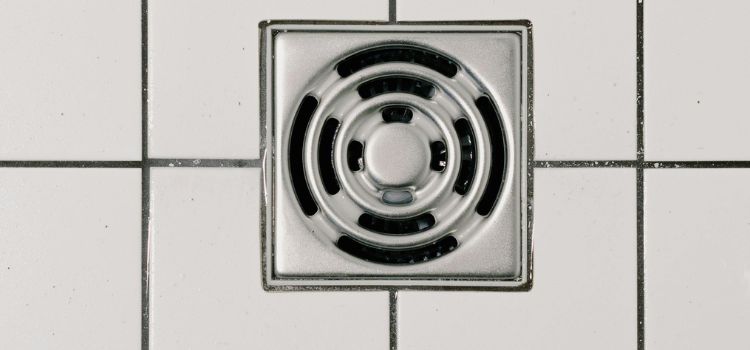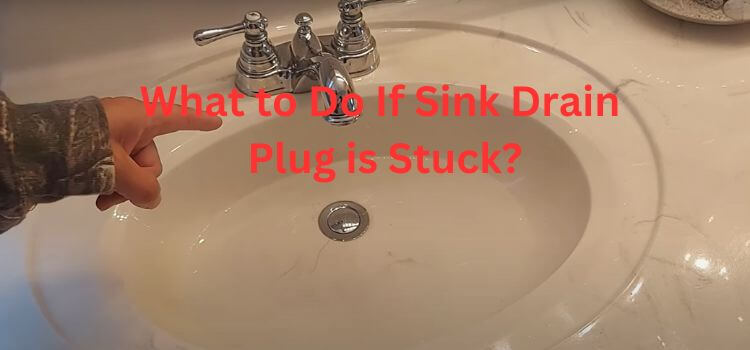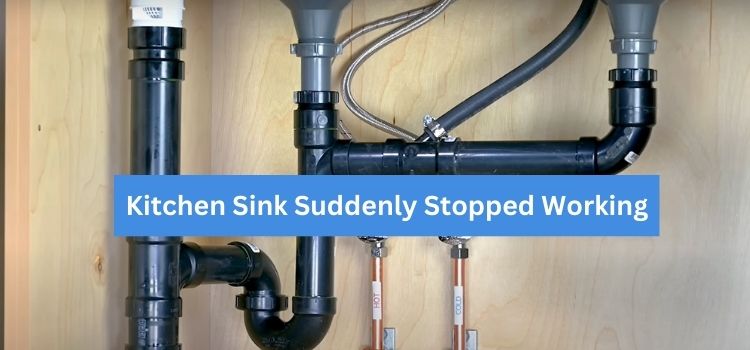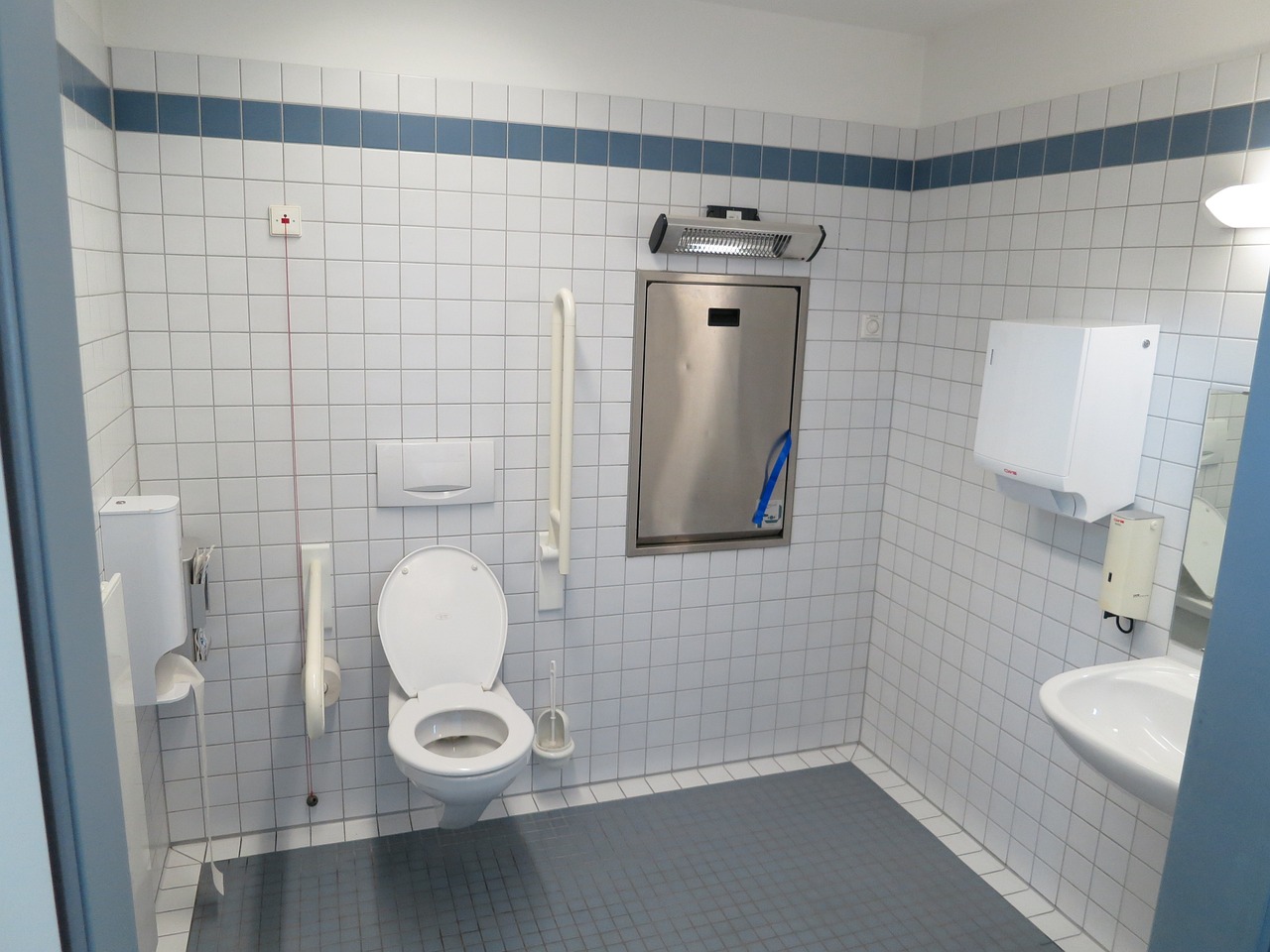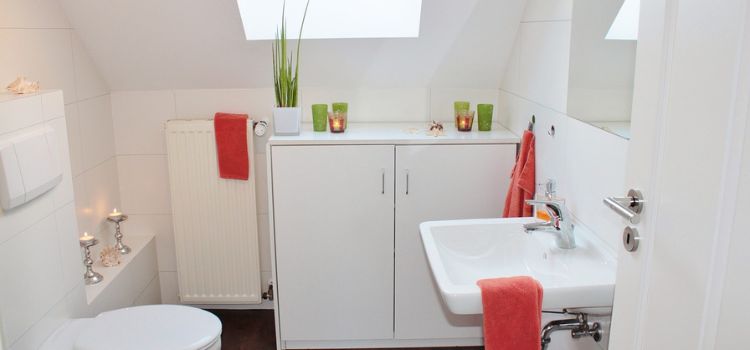Plunging the shower drain made the blockage worse due to compacting debris deeper into the pipe. This can worsen clogs.
Shower drain clogs are common and frustrating. They often result from hair, soap scum, and other debris. Attempting to plunge the drain might seem like a quick fix. Unfortunately, it can sometimes exacerbate the problem. Plunging may push the blockage further down, making it harder to remove.
This can lead to more serious plumbing issues. Understanding the cause of the clog and using appropriate methods is crucial. You might need to use a drain snake or call a professional plumber. Regular maintenance can prevent future clogs. Keeping your shower drain clear ensures a smooth and pleasant showering experience.
Common Drain Problems
Dealing with a plunging shower drain that made things worse can be frustrating. Many homeowners face common drain problems that can disrupt daily routines. Understanding these issues helps in finding effective solutions. This blog post will dive into the most common problems: clogs and blockages, and slow draining issues.
Clogs And Blockages
Clogs and blockages in shower drains are a frequent issue. Hair, soap scum, and dirt often accumulate in the drain. Over time, these materials build up and create a blockage. This prevents water from flowing freely.
Common signs of a clog include:
- Standing water in the shower
- Gurgling sounds from the drain
- Unpleasant odors coming from the drain
To prevent clogs:
- Use a drain cover to catch hair and debris
- Clean the drain cover regularly
- Avoid flushing large items down the drain
When a clog occurs, many people try plunging the drain. This can sometimes make the problem worse. Plunging can push the clog deeper into the pipe. Using a drain snake or chemical drain cleaner might be more effective. For severe clogs, calling a professional plumber is the best option.
Slow Draining Issues
Another common problem is slow draining. This happens when water takes too long to flow down the drain. Slow draining can be caused by partial clogs or a buildup of soap scum and minerals.
Signs of slow draining:
- Water pooling in the shower
- Bubbling water around the drain
- Water draining very slowly
To fix slow draining:
- Pour boiling water down the drain to dissolve soap scum
- Use a vinegar and baking soda solution to break down buildup
- Install a water softener to prevent mineral buildup
Regular maintenance is key to preventing slow draining. Cleaning the drain monthly can help keep water flowing smoothly. If slow draining persists, it may be time to check the plumbing system for deeper issues.
Credit: www.reddit.com
Why Plunging Fails
Plunging a shower drain seems easy. But sometimes it makes things worse. Understanding why this happens can help. Let’s explore why plunging fails and what might be wrong.
Incorrect Technique
Plunging a shower drain needs the right technique. Many people do not use the plunger correctly. This can make the clog worse. Here are some common mistakes:
- Not creating a seal: The plunger must seal the drain. Air leaks reduce effectiveness.
- Using too much force: Pushing too hard can damage pipes. Gentle, steady pressure works best.
- Wrong plunger type: Toilet plungers differ from sink plungers. Using the wrong one won’t work well.
Another issue is not removing excess water. Too much water makes plunging harder. Always remove standing water before plunging.
Proper technique helps. But sometimes, plunging alone is not enough. Other problems might exist.
Underlying Issues
Clogs often hide deeper issues. Hair and soap scum can build up over time. Simple plunging won’t fix this. You might need special tools.
Sometimes, pipe damage causes clogs. Cracked or broken pipes can trap debris. Plunging can’t repair these. A plumber’s help is necessary.
Another problem is tree roots. They can invade underground pipes. This is common in older homes. Roots block water flow, causing severe clogs.
Here is a table of potential underlying issues and their solutions:
| Issue | Solution |
|---|---|
| Hair and soap scum | Use a drain snake or chemical cleaner |
| Pipe damage | Professional plumbing repair |
| Tree roots | Root removal and pipe repair |
Understanding these issues helps. It ensures proper action is taken. Sometimes, professional help is the best choice. This prevents further damage and costly repairs.
Signs Of A Serious Issue
A clogged shower drain can be a huge problem. Plunging the drain might seem like a quick fix, but it could actually make things worse. This blog post will help you identify serious issues that might need professional help. Pay attention to the signs so you can avoid bigger problems down the line.
Frequent Backups
If your shower drain backs up often, this is a serious sign. Water should flow smoothly down the drain. Frequent backups indicate a deeper problem. Here are some things to watch for:
- Slow draining water
- Water pooling around your feet while showering
- Water coming back up after it has already drained
Plunging the drain might not solve these issues. It could even push debris further down, making the clog worse. You might need a professional to snake the drain or use a hydro jet. Ignoring this problem can lead to more damage. Water could leak into other parts of your home. Mold and mildew might grow, causing health issues. A plumber can diagnose and fix the problem properly.
Unpleasant Odors
Bad smells from your drain are another sign of trouble. These odors can be caused by trapped debris or stagnant water. Here are some common smells and what they might mean:
| Odor | Possible Cause |
|---|---|
| Rotten eggs | Sewer gas or bacteria |
| Musty smell | Mold or mildew |
Plunging might not remove the cause of the smell. It could push the debris deeper, making the smell worse. You might need a plumber to clean the drain thoroughly. They can also check if there’s a bigger issue with your plumbing system. Ignoring these smells can lead to more serious problems. Sewer gas is dangerous and can cause health issues. Mold and mildew are also harmful. Addressing these odors quickly can help keep your home safe and clean.
Tools For Drain Cleaning
Clogged shower drains are a common household issue. Many people use plungers to fix the problem, but sometimes plunging can make it worse. Understanding the right tools and methods for drain cleaning can save time and prevent damage. This post will discuss two main tools: plungers and snake tools.
Plungers
Plungers are a simple and effective tool for clearing minor clogs. They create suction that can dislodge blockages. There are different types of plungers for different tasks.
- Standard Plunger: This is the most common type. It has a rubber cup and a wooden handle. It’s best for flat surfaces.
- Flange Plunger: This type has an extra flap inside the cup. It’s designed for toilets but can be used for shower drains.
- Accordion Plunger: Made of plastic, this type creates more force. It’s useful for stubborn clogs.
Using a plunger correctly is important. Place it over the drain and push down gently. Then, pull up quickly to create suction. Repeat this several times. Check if the water starts to drain.
Plungers are great for minor clogs. For more serious blockages, another tool might be needed.
Snake Tools
Snake tools, also known as drain augers, are more advanced. They consist of a long, flexible metal cable that can reach deep into pipes. They are ideal for removing clogs that plungers can’t handle.
- Handheld Snake: This is the most common type for home use. It’s easy to operate and effective for most clogs.
- Power Snake: This type uses an electric motor. It’s more powerful and suitable for severe clogs.
- Toilet Auger: Specifically designed for toilets, but can be used for other drains.
Using a snake tool requires some technique. Insert the cable into the drain and turn the handle clockwise. This helps the cable move through the pipe. Once you feel resistance, you’ve reached the clog. Continue to turn and push until the clog breaks up.
Snake tools are effective but require caution. Always follow instructions to avoid damaging pipes.
Diy Drain Solutions
Dealing with a clogged shower drain can be frustrating. Sometimes, plunging the drain might make things worse. Luckily, there are effective DIY solutions to try at home. These methods can help clear the blockage without causing more problems.
Baking Soda And Vinegar
Baking soda and vinegar are natural and powerful cleaning agents. They can help clear clogs in your shower drain without harsh chemicals. This method is easy and safe to try.
Start by pouring a cup of baking soda down the drain. Make sure it goes deep into the pipes. Next, pour a cup of vinegar. You will notice fizzing and bubbling. This reaction helps break down the blockage.
Let the mixture sit for at least 15 minutes. The longer it stays, the better it works. After waiting, flush the drain with hot water. This helps clear out any remaining debris.
- Pour one cup of baking soda.
- Add one cup of vinegar.
- Wait for 15 minutes.
- Flush with hot water.
Repeat the process if needed. This method is great for regular maintenance. It keeps your drains clean and free-flowing. Always use baking soda and vinegar as a first step before trying harsher methods.
Hot Water Flush
A hot water flush is another simple solution for clogged drains. Hot water can dissolve soap scum, grease, and other debris that cause blockages. This method is quick and easy to perform.
Start by boiling a large pot of water. Carefully carry the pot to your shower. Pour the hot water slowly down the drain. Make sure to pour it in stages, allowing the water to work through the clog.
Repeat the process if the water drains slowly. Hot water flushes can be done regularly to prevent clogs. It’s a simple way to maintain your shower drain.
- Boil a large pot of water.
- Slowly pour hot water down the drain.
- Repeat if necessary.
Avoid using chemical drain cleaners frequently. They can damage your pipes over time. Stick to natural methods like hot water flushes for a safer approach.

Credit: www.amazon.com
When To Call A Professional
Dealing with a clogged shower drain can be a frustrating experience. Sometimes, plunging the drain seems like a quick fix. But, it often makes the problem worse. At this point, knowing when to call a professional is crucial. Understanding persistent problems and pipe damage concerns can help you decide when to seek expert help.
Persistent Problems
Plunging might not always solve the issue. Persistent clogs could indicate a more serious problem. Several signs suggest the need for professional help:
- Water drains slowly even after plunging.
- Frequent clogging occurs despite regular maintenance.
- Foul odors persist from the drain.
- Gurgling sounds come from the pipes.
These issues often indicate deeper blockages. Tree roots or debris buildup in the main sewer line could be the culprits. A professional plumber has the tools to diagnose and fix these problems. Ignoring these signs can lead to bigger issues. Water damage or sewage backup can result in costly repairs.
Pipe Damage Concerns
Plunging can sometimes cause pipe damage. Older pipes are especially vulnerable. Excessive force during plunging can create cracks. These cracks can lead to leaks. Leaky pipes not only waste water but also cause structural damage to your home. Professionals can inspect and repair damaged pipes.
Here are some signs of pipe damage:
- Wet spots on walls or ceilings.
- Mold or mildew growth around the shower area.
- Low water pressure in the shower.
- Unusual noises when the water is running.
Ignoring pipe damage can worsen over time. Calling a professional ensures the problem is fixed correctly. This helps maintain your plumbing system’s longevity and efficiency.
Preventive Measures
Plunging a shower drain can sometimes make the problem worse. This can happen if the blockage is deep or if the pipes are old. Understanding the right preventive measures can help keep your drains clear. It will also save you from bigger issues down the line.
Regular Maintenance
Regular maintenance is key to keeping your shower drain clear. This means checking the drain often and removing any visible hair or debris. You can also use a drain cleaner once a month. This helps keep the pipes clean and clear. A homemade mixture of baking soda and vinegar works well too.
Here are some simple steps for regular maintenance:
- Remove hair from the drain after every shower.
- Pour hot water down the drain once a week.
- Use a drain cleaner monthly to break down buildup.
- Check pipes for any leaks or cracks every few months.
Follow these steps to avoid bigger problems. Regular checks and cleanings are easy and quick. They can prevent costly repairs in the future.
Drain Screens
Drain screens are a simple but effective tool. They keep hair and debris from going down the drain. This prevents clogs and keeps your pipes clear. Drain screens are easy to use and install.
Here are some benefits of using drain screens:
- Easy to install on any drain.
- Inexpensive and available at most stores.
- Reduces clogging by catching hair and debris.
- Easy to clean and reuse.
Using a drain screen is a small step with big benefits. It keeps your shower drain clear and prevents bigger issues. Regular cleaning of the screen is also important. Remove the collected hair and debris weekly.

Credit: www.amazon.com
Long-term Fixes
Dealing with a clogged shower drain can be frustrating. Often, people try to solve the problem by plunging the drain. Unfortunately, this can sometimes make the situation worse. The issue may require long-term fixes to ensure the problem doesn’t happen again. In this post, we will discuss two effective solutions: pipe replacement and drain system upgrades.
Pipe Replacement
Replacing pipes can be a permanent solution to a clogged shower drain. Older pipes may have corrosion or buildup that plunging cannot fix. New pipes ensure better water flow and reduce future clogs. Here are some steps involved in pipe replacement:
- Identify the type of pipes currently in use.
- Choose the appropriate replacement pipes (PVC, copper, etc.).
- Shut off the water supply to the shower.
- Remove the old pipes carefully.
- Install the new pipes and secure them properly.
- Turn the water back on and check for leaks.
This process can be complex and might require a professional plumber. The cost can vary based on the length and type of pipes needed. Below is a table outlining the average cost for different pipe materials:
| Pipe Material | Average Cost per Foot |
|---|---|
| PVC | $0.50 – $2.00 |
| Copper | $2.00 – $8.00 |
| PEX | $1.50 – $5.00 |
Drain System Upgrades
Upgrading the drain system can also provide a long-term solution to recurring clogs. Modern drain systems are designed to handle more water and resist clogs more effectively. Some of the common upgrades include:
- Installing a larger drain to handle more water.
- Adding a drain cover to catch hair and debris.
- Using a drain snake for regular maintenance.
- Installing a high-efficiency drain system.
These upgrades can significantly improve the performance of your shower drain. A professional plumber can help assess your current system and recommend the best upgrades. Here is a table with some common drain upgrades and their benefits:
| Upgrade | Benefit |
|---|---|
| Larger Drain | Handles more water, reduces clogs |
| Drain Cover | Catches hair and debris |
| Drain Snake | Removes blockages, easy maintenance |
| High-Efficiency Drain | Better performance, fewer clogs |
Upgrading your drain system ensures a smooth flow of water and less frequent clogs. These improvements can save you time and hassle in the long run.
Frequently Asked Questions
Why Did Plunging My Shower Drain Make It Worse?
Plunging can push the clog deeper into the pipes. This makes it harder to remove. It may also damage pipes or seals. Consider using a different method.
What Should I Do After Plunging Fails?
If plunging fails, try using a drain snake. It can reach deeper clogs. Chemical drain cleaners are another option. For severe clogs, call a professional plumber.
Can Plunging Damage My Shower Drain?
Yes, plunging can damage your shower drain. Overuse or excessive force can harm pipes. This may lead to leaks or breaks. Use plunging sparingly and carefully.
Are Chemical Drain Cleaners Effective?
Chemical drain cleaners can be effective. They dissolve clogs quickly. However, they can also damage pipes. Use them cautiously and follow the instructions.
Conclusion
Plunging a shower drain can sometimes worsen the problem. Always try alternative methods before resorting to professional help. Avoid harsh chemicals that can damage pipes. Regular maintenance is key to preventing clogs. A well-maintained drain ensures a stress-free shower experience and keeps your plumbing in top condition.
